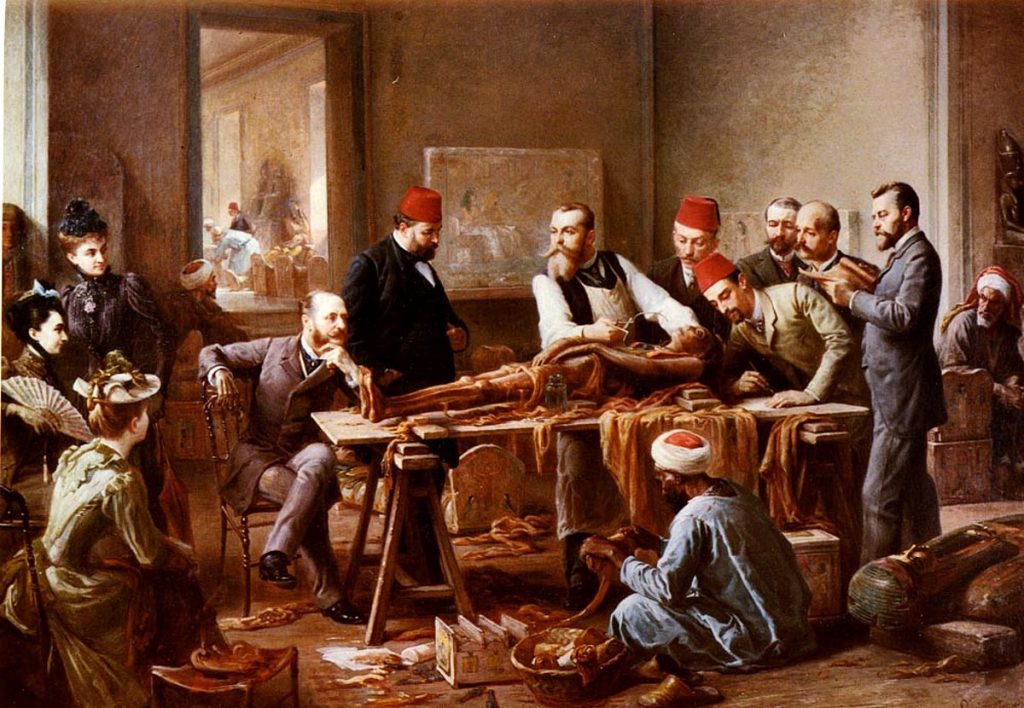Having great cultural and historical value, Egyptian mummies are now exhibited and preserved in museums. On the other hand, they were used as remedies in the Middle Ages. Transformed into powder form, they were notably ingested by Europeans to cure all kinds of illnesses.
Mumia, the powder mummy
At the time, doctors used “mumia”, powdered mummies, to heal, disinfect and anesthetize wounds. In addition, this substance was also consumed by people from different social classes, as it was believed to cure all kinds of diseases, including headaches, coughs, nausea and plague.
Available from 12e century among apothecaries, the consumption of mumia reached its peak in the 16e century. Whole or powdered mummies were notably imported from Egypt to meet European demand. However, the looting of Egyptian tombs had taken on a large scale and real mummies were becoming difficult to find.
Thus, the merchants began to manufacture counterfeits by using the corpses of prisoners condemned to death which they dried in the sands of the desert. Guy de la Fontaine, a royal doctor unconvinced by this remedy, also doubted that some mumia were made from the corpses of peasants who died in Alexandria in 1564.
It was consumed until the 18e century
Despite warnings, Europeans continued to consume mumia until the 18e century. Once they were no longer used as medicine, however, powdered mummies did not disappear from the European market. Indeed, they were used by painters to obtain a certain pigmentation.
Today, it is still possible to buy “mummy brown” on the internet. However, it is no longer mummies powder, but a simple mixture of kaolin, quartz, goethite and hematite.

[related_posts_by_tax taxonomies=”post_tag”]
The post Mummies were once eaten by Europeans appeared first on Gamingsym.

